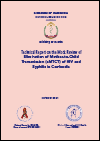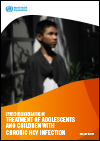Elimination of Mother-to-Child Transmission Publications
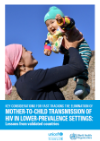
Over more than a decade, the world has made considerable progress in reaching women with services to reduce vertical transmission of HIV. Most countries have adopted lifelong ART to “treat all” pregnant women, regardless of their CD4 count, as part of a public health approach and one of the key objectives to achieve the elimination of mother-to-child transmission (EMTCT) of HIV. Yet, results of efforts to reduce the number of new paediatric HIV infections have fallen short against the 2020 Start Free target, among others; the goal of ending HIV and AIDS in children remains elusive.
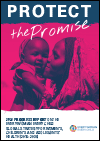
The 2022 Global Strategy progress report provides an assessment of the situation of women’s, children’s and adolescent’s health in this third year of the COVID-19 pandemic. The report presents abundant evidence showing that inequities persist despite great progress in reducing maternal and child mortality in the two decades leading up to the pandemic.
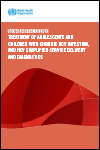
Hepatitis C virus (HCV) infection is a major public health problem and cause of chronic liver disease that leads to approximately 399 000 deaths annually. In 2019, only 21% of the 58 million persons with chronic HCV infection had been diagnosed, and 13%, treated.
These guidelines provide updated evidence-based recommendations on the priority HCV-related topics from the 2018 WHO Guidelines for the care and treatment of persons diagnosed with chronic hepatitis C infection and the 2017 WHO Guidelines on hepatitis B and C testing.
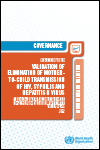
Achieving validation of elimination of mother-to-child transmission (EMTCT) of HIV, syphilis and hepatitis B virus (HBV) is a tremendous accomplishment, requiring health ministry–led accountability, rigorous data analysis, intensive programme assessment and multilevel collaboration. This governance guidance outlines the standardized structures and processes used to validate EMTCT of HIV, syphilis and HBV at the national, regional and global levels.
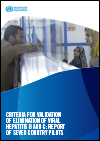
A series of country pilots (Brazil, Egypt, Georgia, Mongolia, Rwanda, Thailand and United Kingdom of Great Britain and Northern Ireland) of the elimination criteria across the six WHO regions was undertaken during 2021–2022. The main objective was to conduct a practical assessment and evaluate the feasibility of accurately measuring the impact and programmatic targets for hepatitis elimination as established by the WHO Interim guidance for country validation of viral hepatitis elimination.
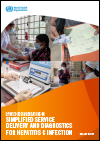
This policy brief, one of two on the updated hepatitis C (HCV) guidelines, focuses on the new recommendations on simplified service delivery for a public health approach to HCV testing, care and treatment. These recommendations include decentralization, integration and task-sharing, in addition to the use of point-of-care (POC) HCV viral load assays and reflex viral load testing.
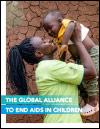
An end to AIDS in children, achieved through a strong, strategic, and action-oriented alliance of multisectoral stakeholders at national, regional, and global levels that works with women children and adolescents living with HIV, national governments, and partners to mobilize leadership, funding, and action to end AIDS in children by 2030.
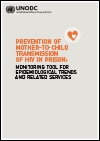
The monitoring tool is divided into two parts. The first part addresses epidemiological trends in mother-to-child transmission in prison, with a view to collecting the epidemiological data needed to monitor progress towards the global targets on prevention of mother-to-child transmission.
